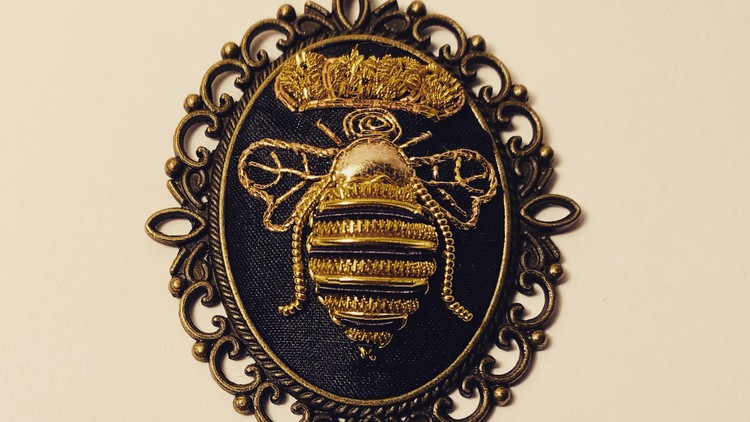Introduction to Goldwork Embroidery with Queen Bee Project
- Description
- Curriculum
- FAQ
- Reviews
- Grade

Dating back over 1000 years, Goldwork Embroidery has been synonymous with splendour. This traditional handcraft has been a symbol of wealth, power and status throughout the centuries. Goldwork has often been used in ecclesiastical, ceremonial and military applications. In more recent years Goldwork has been used in Fashion & Interior Design. In this online course I will teach you all the basic techniques of this ancient art form. We will begin by looking at the history of Goldwork. We will then look in depth at the various metal threads and discuss their qualities and uses. We will discuss the equipment needed for Goldwork and how to transfer a design. You will then follow step-by-step tutorials aimed at giving you an in depth guide to traditional Goldwork. This course is suitable for beginners.
At the end of the tutorials you will be able to follow along with 2 projects to create your own work of art. These projects include A stunning Queen Bee Pendant Project and A Wave Brooch Project. You will learn this wonderful historic skill and produce your very own heirloom. You can then continue to use your newly acquired skills to produce your own projects such as embellishing clothing and much more.
-
1Meet the Tutor
-
2Introduction to Goldwork Embroidery and Description of Course Content
Introduction to the history of Goldwork throughout the decades. Description of course content showing the 4 beautiful Goldwork mini projects we will complete on this course. They consist of a Monogram Initial Keyring, A Wave Brooch, A Christmas Bauble and A Queen Bee Pendant Necklace
-
3Queen Bee Project Preview
-
4Equipment Needed For Goldwork Embroidery
Comprehensive guide to equipment needed for Goldwork Embroidery. This lecture discusses in depth all the equipment used in traditional Goldwork.
-
5Comprehensive Guide to Various Metal Threads Used in Traditional Goldwork
In this lecture we will take a close look at the various metal threads available for Goldwork Embroidery. We will look at several types of threads in great detail and discuss how they are used in this traditional hand embroidery.
-
6Transferring a Design
Step-by-step tutorial exploring different ways to transfer a design for embroidery. Full guide to using the prick & pounce method to successfully transfer a design ready to embroider.
-
7Learning to couch down Imitation Japanese Thread in Goldwork
In this lecture you will learn all about the most popular thread in Goldwork, Imitation Japanese thread. We will discuss the thread in detail and you will learn a technique called couching. This is a skill specific to Goldwork. The Gold thread is stitched to the surface of the fabric to show it in all its glory. This is the most used technique in Goldwork Hand Embroidery.
-
8Applying String Padding Part 1
String padding is a technique that is used in Goldwork and Metal thread embroidery. The string is attached to the base fabric in a specific way to enable the gold threads to be stitched on top. The padding gives the metal threads a three dimensional shape which is a very effective design feature. In this lecture you will learn how to apply the string padding in the correct way to support your Goldwork embroidery.
-
9Applying String Padding Part 2
In String Padding Part 2 we continue to learn ways to attach string padding, in particular how to apply the string padding on a curved design using several strands of string.
-
10Using a Velvet Board
-
11Broad Plate Over Felt
In this lecture we will take a look at placing Broad Plate over Felt. Broad Plate is a metal that is flattened into a plate. It is sewn down over felt padding using a zigzag technique which enables you to fill a larger surface area.
-
12Applying Pearl Purl & Twists
-
13Cutwork Chips
-
14Felt Padding & Kid Leather
In this lecture we will look at the ways to attach felt padding to a design in preparation for laying Goldwork threads on top. We will also look at Kid Leather which is used to cover a surface area of a design alongside the metal threads.












